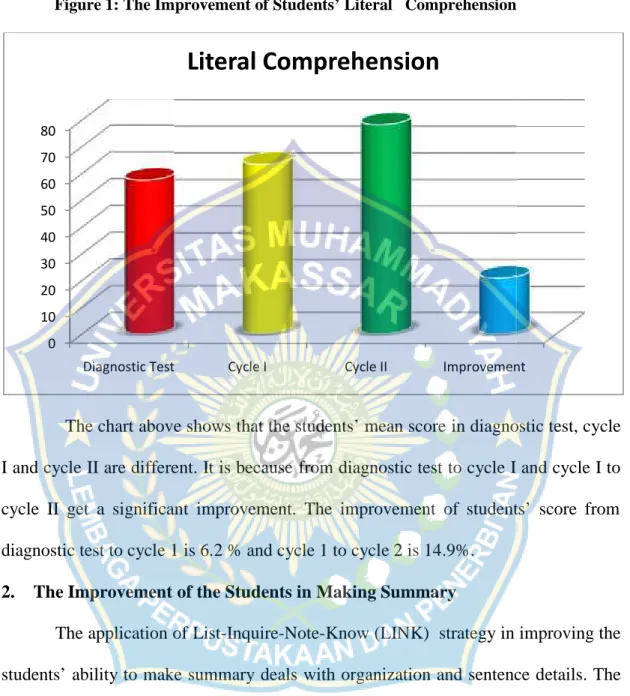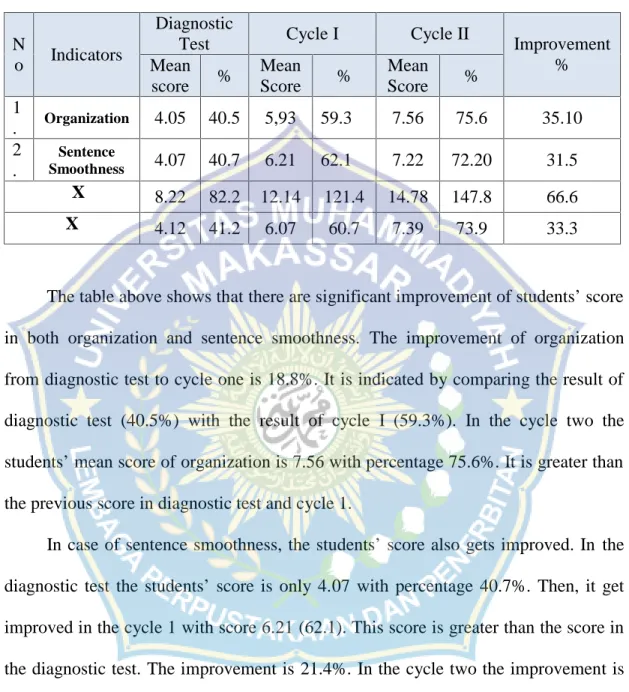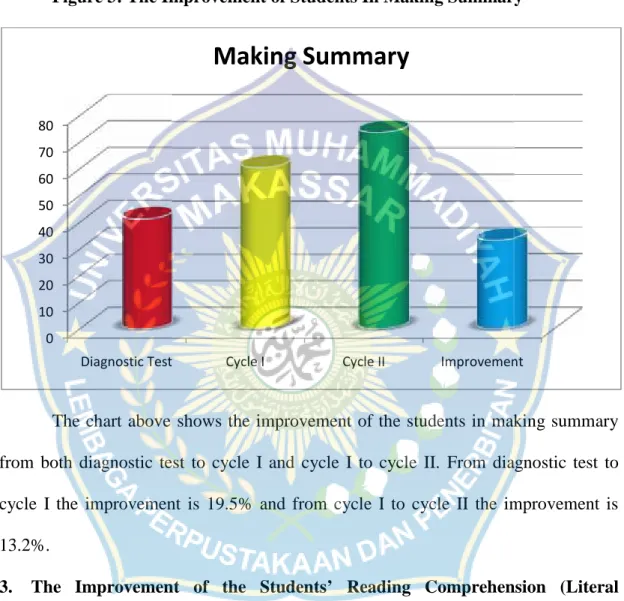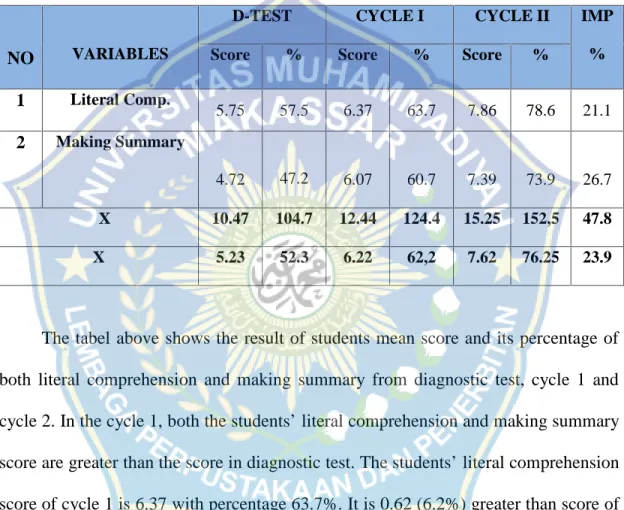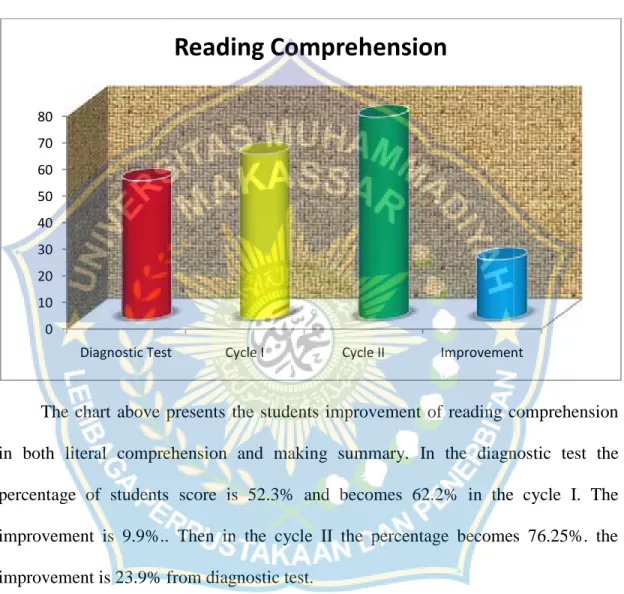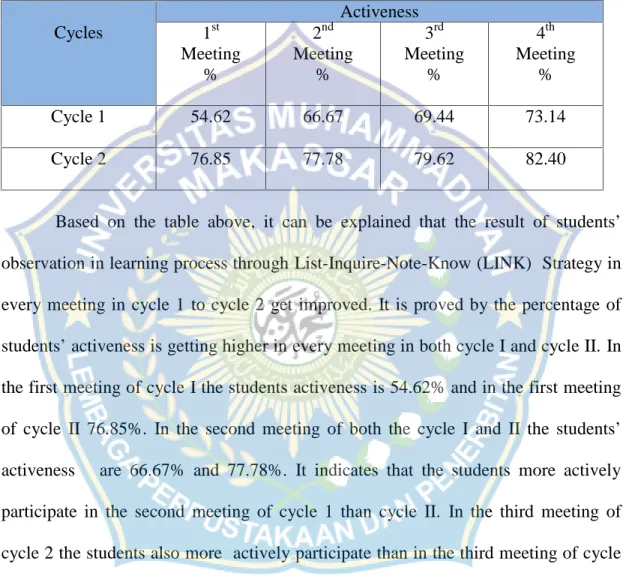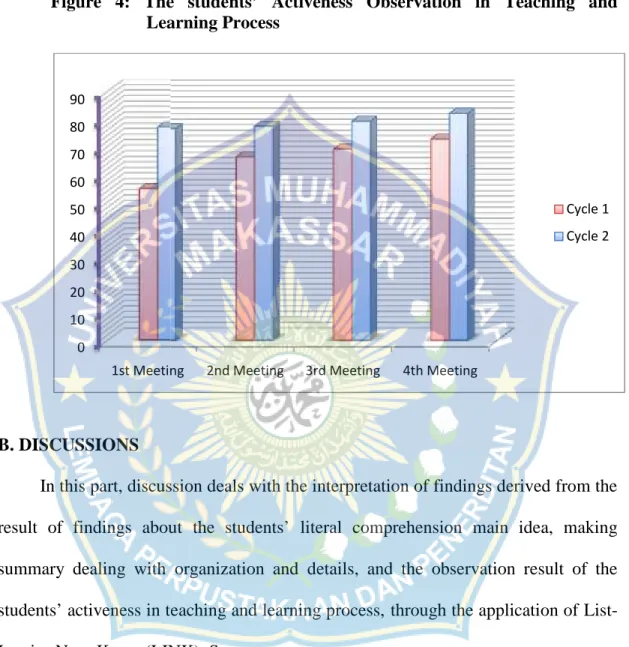Title Implementation of the List - Ask - Note - Know (LINK) Strategy to Improve Students' Reading Comprehension (Classroom Action Research on Eighth Grade Students of . Madresya Tsenawiyah Guppi Dante Koa). The objective of the research was to know the improvement of students' reading comprehension after using the List-Inquire-Note-Know (LINK) Strategy in the second year students of Madresah Tsanawiyah Guppi Dante Koa Enrekang, Regency”. The findings of the research were the improvement of students' reading comprehension that was confronted with word-for-word comprehension and summary making.
It meant that the improvement in reading comprehension of students from D-Test to Cycle I was 18.92%, and Cycle I to Cycle II was 22.56%. List-Inquire-Note-Know (LINK) Strategy was one of the reading comprehension learning strategies that could improve student reading comprehension in case of integrative processes, comprehension and summary making in the sophomores of Madrasah Tsanawiyah Guppi Dante Koa, Enrekang , regency. Irwan Akib, M.Pd., the rector of Makassar Muhammadiyah University for his advice during her studies at the university.
Andi Sukri Syamsuri, M.Hum., the dean of FKIP UNISMUH Makassar for all advice and motivation. Erwin Akib, S.Pd., M.Pd., the head of the English Education Department of FKIP UNISMUH Makassar, who gave her valuable authorities and suggestions to make this thesis.
INTRODUCTION
- Problem Statement
- Objective of the Study
- Significance of the Study
- Scope of Study
- Concepts of Reading Comprehension
- Conceptual Framework
They had difficulty understanding text features including social function, generic structure, and linguistic feature. Although most people are aware of the importance of English, some researchers who conducted the research still found that students have low achievement in reading comprehension. Low motivation to seriously learn the material is one of the factors students face.
The writer is interested in applying this method, in this way the writer will conduct the research titled "Implementation of List-Inquire-Note-Know (LINK) Strategy to Improve Students' Reading Comprehension in Second Year Madrasah Students Tsanawiyah Guppi Dante Koa Enrekang". Based on the above research questions, the objective of the study is to find out the improvement of students' reading comprehension in literal sense and summary through List-Inquire-Note-Know (LINK) Strategy in Tsanawiyah Guppi Dante Koa Second Grade Madrasa, Enrekang. The scope of the research is limited to the implementation of the LINK Strategy in improving students' reading comprehension, literal and interpretive comprehension terms.
In upper secondary schools, it was messy because the result of the third year is lower than the first and second years. The process of comprehension involves decoding the writer's words and then using background knowledge to form an approximate understanding of the writer's message. This means that we need to understand what the text is about, both the meaning and the content of the text.
It is very important that the skills to support the development of the students in reading comprehension. With this ability, the students should be able to select the important and relevant point, and the students should be able to understand the meaning and significance of the fact and ideas. In this skill, the students must be able to deduce certain things from information from the reading they have read.
The most important thing in making the inference is the ability of the student to know what the author means in material. In this capacity, the students should be able to draw their conclusions from what they have read. Teachers refer to the author of the word or phrase to explain what the word or phrase means.
For example, in preparation for reading the eighth grade social studies textbook on ancient Egypt and the Valley of the Kings, a teacher might choose "Pyramids." Ask students to review their original notes to identify previous misinformation or misunderstandings challenged by the reading and how their schema changed as a result of the information or ideas in the reading.
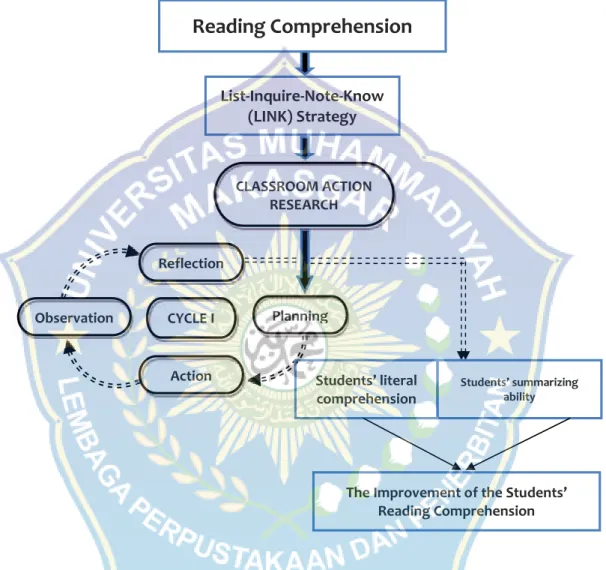
RESEARCH METHOD
- Research Variables and Indicators
- Research Procedures
- Research Subjects
- Research Instrument
- Data Collection
- Technique of Data Analysis
A test was used to measure students' literal and interpretive understanding through the List-Inquire-Note-Know (LINK) strategy. Observation was used to know the students' activity in the teaching and learning process through the List-Inquire-Note-Know (LINK) strategy. The application of the List-Inquire-Note-Know (LINK) strategy in improving the literal understanding of the students is about the main idea.
After applying the List-Inquire-Note-Know (LINK) Strategy in cycle 1, the students' average score becomes 6.37 with a percentage of 63.7%. The chart above shows that students' mean scores in Diagnostic Test, Cycle I and Cycle II are different. The chart above shows that students' mean scores in Diagnostic Test, Cycle I and Cycle II are different.
In this case, the ultimate improvement in students' reading comprehension is calculated through the combination of students' improvement in both literal comprehension and summarizing. In cycle 1, both the students' literal understanding and creating summary scores are greater than the scores in the diagnostic test. The students' summary score on cycle 2 is greater than the students' score on cycle 1.
Then, in Cycle 2, the students' average reading comprehension score is greater than the Cycle 1 score. This is indicated by the percentage of the student's diagnostic test result and the percentage of the.
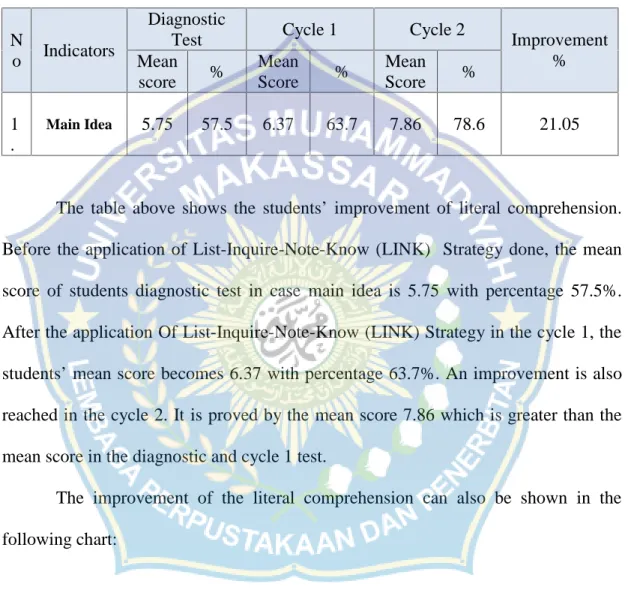
FINDINGS AND DISCUSSION
DISCUSSIONS
In this part, the discussion deals with the interpretation of the findings that come from the results of the findings on the literal understanding of the student's main idea, the creation of a summary that deals with organization and details, and the result of observing the student's activity in the teaching and learning process, through the use of the List-Inquire-Note strategy -Know (LINK). From the table above, it can be seen that the percentage of students' literal understanding in the diagnostic test (without list-questions-notes-I know) 4 students (14.81%) got a fabulously good grade, 13 students (48.14%) got a fair grade students got a bad grade and none of the students for the second classification. And after the List-Ask-Record-Know (LINK) strategy in cycle I, the percentage of students' literal understanding was: 1 student (3.70%) got good, 7 students (25.92%) got very good , 16 students (59.25%) got a fair grade, 3 students (11.11) got a bad grade, none of the students for other classifications.
The result of the data analysis through the reading test shows that the students in the summary in terms of organization and details have improved significantly. It is indicated by the percentage of students' diagnostic test score and the percentage of students' test score in cycle I and II that were different. The table above shows that the percentage of students in the summary in the diagnostic test (Non List-Inquire-Note-Know) 4 students (14.81%) have passed, 18 students (66.7%) are poor, 5 students (18,51). very poor and none of the students for the other classification.
And after taking action with the List-Ask-Note-Know (LINK) strategy in cycle I, the percentage of students in creating a summary was: 7 students (25.92%) got very good, 10 students (37.03%) got fair, 10 students (37.03%) poor, and none of the students for other classifications. The result of cycle I shows that the average grade of the students is still low, so the campaign continued in cycle II. The List-Inquire-Note-Know strategy (LINK) is one of the reading comprehension teaching strategies that could improve the reading comprehension of the second year students of Madrasah Tsanawiyah Guppi Dante Koa, Enrekang, Regency in the case of literal comprehension and summarization.
The improvement of students' literal understanding from the diagnostic test in cycle I is 6.2% and from cycle I to cycle II is 14.9%. The improvement of students in the summary from the diagnostic test to cycle I is 13.5% and from cycle I to cycle II is 13.2%. The second year students of Medresah Tsanawiyah Guppi Dante Koa, Enrekang Regency made a significant improvement in participation in involvement in the teaching and learning process from cycle I to cycle II through the application of the List-Inquire-Note-Know (LINK) Strategy .
The researcher formulates his proposal practically based on the research consequences or significance of the study.
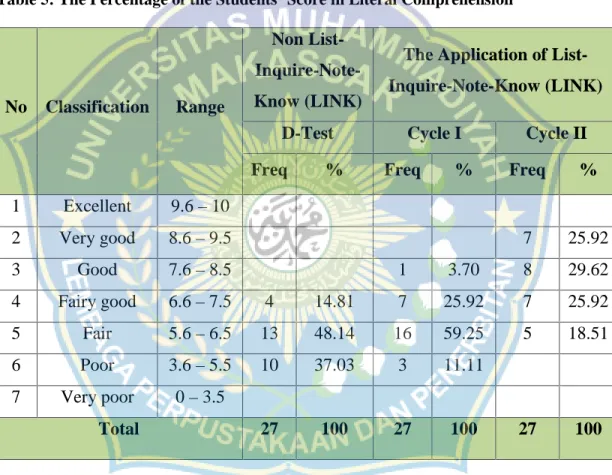
CONCLUSIONS AND SUGGESTIONS
SUGGESTIONS
